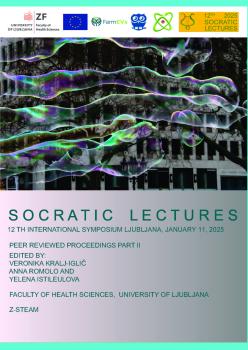Surface Properties of Microalgal Biomass and Microplastics: Exploring Point of Zero-Charge and Contact Angle
Kratka vsebina
The surface properties of microalgal biomass and microplastics, focusing on the point of zero charge (PZC) and water contact angle (CA), were investigated. Microalgae, particularly Chlorella vulgaris and mixed microalgal consortia, were cultivated and analysed for their surface characteristics. Oven-dried and freeze-dried samples exhibited varying degrees of hydrophilicity, with freeze-dried microalgal consortia exhibiting more hydrophilic surface. The PZC values indicated a higher density of negative charges on the surface of C. vulgaris compared to the microalgal consortia biomass. Microplastics (MPs) from agricultural mulch films, including biodegradable and non-degradable types, were also examined. Results showed that naturally aged MPs exhibited more hydrophilic surfaces compared to their pristine counterparts. The PZC values of microplastics varied, with some showing neutral to slightly negative charges at environmental pH levels. The findings underscore the importance of surface characterization in understanding the sorption mechanisms of contaminants.
Prenosi
Pages
Najavljeno
Kategorije
Licenca

To delo je licencirano pod Creative Commons Priznanje avtorstva-Deljenje pod enakimi pogoji 4.0 mednarodno licenco.


